- Skip to main content
- Skip to primary sidebar
- About Art Class Curator
- Media & Press
- Programs for Schools
- Member Login
- Search this website
Art Class Curator
Hands-on and Minds-curious Art Learning
September 9, 2020 4 Comments

Virtual Art Museum Field Trip
Inside: A free virtual art museum field trip assignment for your students to complete at home or in the classroom! A complete assignment with links to art museums and four engaging activities!
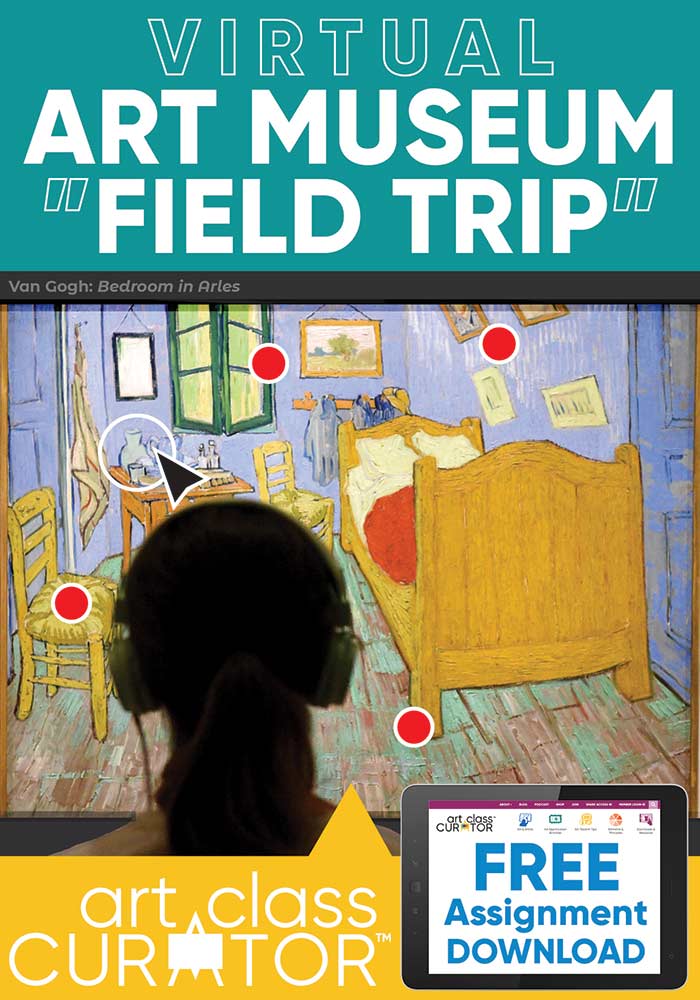
We’re all looking for new ways to engage students during this crazy year! Our students need the creativity and social-emotional learning that art has to offer more than ever. What better way to connect them with art than touring an art museum?
We may not be able to do big field trips with our students this year, but they can still make artwork connections that will touch their spirit and inspire their own art. Thankfully, art museums around the world have made their collections available online. We’ve picked a few of our favorites and created four fun activities your students can complete as they explore the museums virtually!
Free Virtual Art Museum Assignment
Whether you’re teaching online, socially distancing in a classroom, or trying to get it all done in a hybrid model, you and your students will love this virtual art museum assignment.
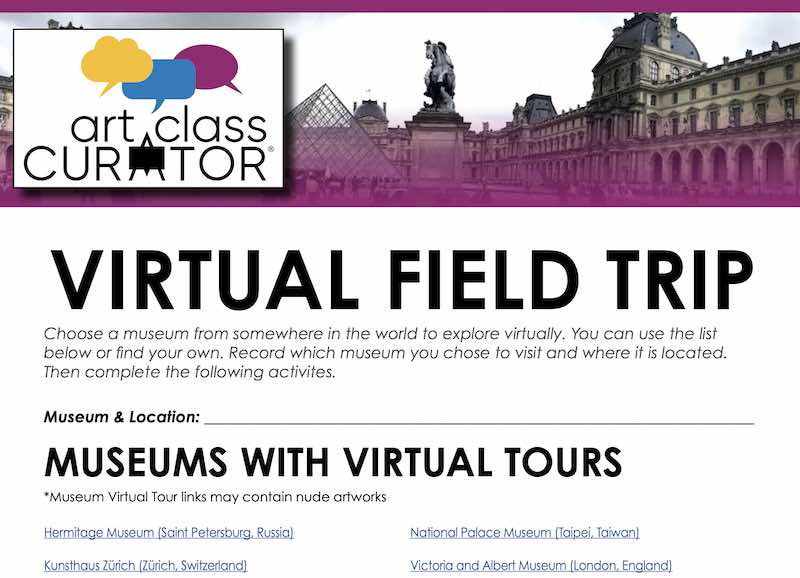
Students choose an art museum to visit from the list (all helpfully linked), then there are four activities they can complete:
- Scavenger Hunt
- Make a Meme
Engage your students’ creativity and skills with these fun assignments! Grab the free download below.

Free Download
Virtual Field Trip Assignment
Virtual art museum field trip assignment.
Use this free virtual field trip assignment to help students explore art museums from home or in the classroom!
Ready to plan an in-person field trip to an art museum? Get our Field Trip Kit !
You May Also Enjoy These Posts:
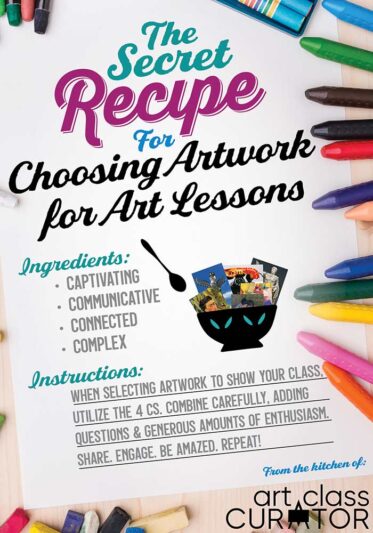
Reader Interactions
May 21, 2024 at 12:19 pm
The virtual museum field trip download isn’t working. I’ve tried a few times, and nothing has arrived in my inbox. Yes, I’ve checked spam too.
June 3, 2024 at 12:01 pm
I just sent it to your email manually!
August 13, 2024 at 12:30 pm
I’m experiencing the same issue with the download.
August 24, 2024 at 1:58 pm
According to my system, the download was emailed to you, so it may be stuck in your spam/junk folder. As a back up, I also emailed you the download as an attachment. If you still do not receive it, please email me at [email protected] .
Leave a Comment Cancel reply
Your email address will not be published. Required fields are marked *
This site uses Akismet to reduce spam. Learn how your comment data is processed .
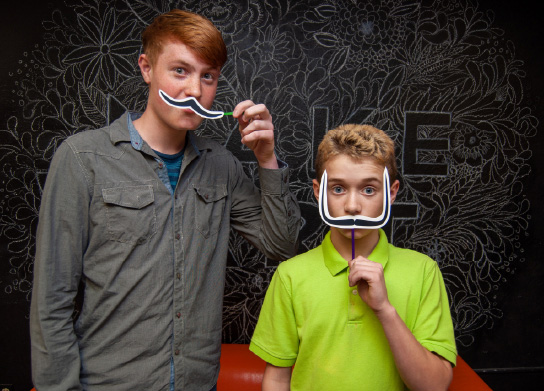
Get Art Inspiration To Your Inbox!
Free Worksheets!
*Free Bundle of Art Appreciation Worksheets*
In this free bundle of art worksheets, you receive six ready-to-use art worksheets with looking activities designed to work with almost any work of art.
Museum Assignment
Find a museum in your area or travel to the museum of your choice.Below is a list of some museums in our area:
Canajoharie Library Collection/Canajorharie,NY
Munson Williams Proctor Museum/ Utica , NY
Fenimore House and Native American Art Museum/ Cooperstown, NY
Everson Museum/ Syracuse, NY
Clark Museum/Williamstown, Mass.
Norman Rockwell Museum/ Stockbridge, Mass.
Old Forge Art Center
Hamilton College Art Gallery
Of course, there is NYC with the Metropolitan Museum of Art
Museum of Modern Art
The Whitney Museum of American Art
Guggenheim Museum
Brooklyn Museum
And galleries too numerous to name here.
Catskill area: DIA Beacon
Oleana, home of the Hudson River Painter , Frederick Church
Obviously if you are a student from California, you can choose whatever museum is in your area. If you want some guidence as to what is available in your area, let me know exactly where you live, and I will give you some ideas.
This Museum visit must be completed by 4/1 to give you time to research one artist that you find in the museum collection.
From your museum visit choose one work which really grabs your attention. Make little pencil sketches of the work. These are not professional finished drawings, but rough quick sketches of the chosen artwork.
a. Objects, figures, architecture, abstract marks, etc. b. Values ( light and shadows)
c. Composition, ( where things are in the picture )
Do not worry about photographic realism here. A sketch is a sketch. Make about 4 or 5 little sketches, taking about a total of 30 min.
* Make a digital image of the drawings, and attach the file as you would attach a file to a written assignment.
* You may also scan your drawing, and attach that file.
PART 3/Museum Project
Write a short research essay on the particular artist that you chose. You want to choose an artist that has some fame here. If you choose the local talent, there may not be much material on the net in which to write much on.
Make the essay about 350 words, or more if you get going. Good luck, Mr. S.
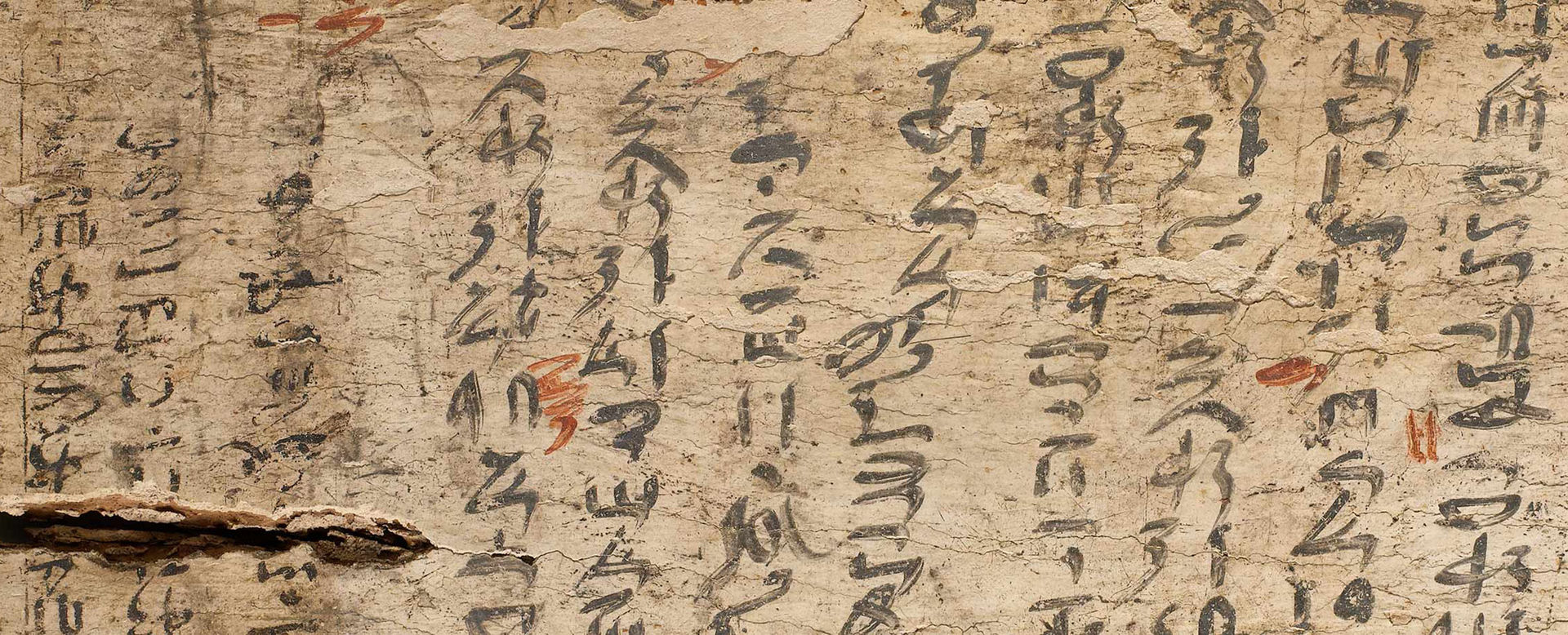
Lesson Plans
These lesson plans help you integrate learning about works of art in your classroom. Select an option below to browse lesson plans by grade, or continue scrolling to see all lesson plans.
Lesson plans for elementary school students
Lesson plans for middle school students
Lesson plans for high school students
Elementary School
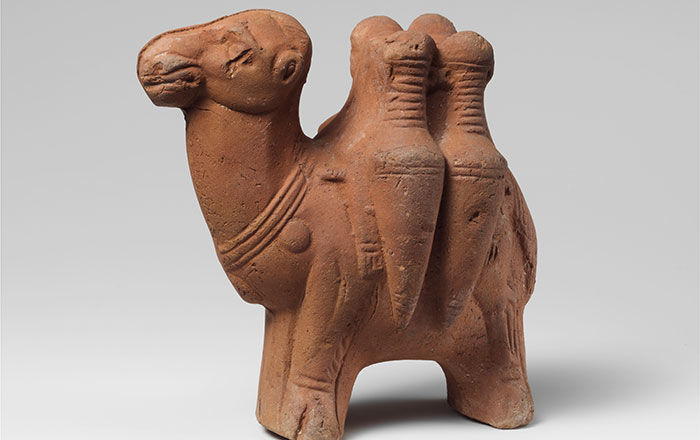
Ancient Animals at Work
Identify ways animals (past and present) enhance daily life through a close look at an ancient figurine and art making.
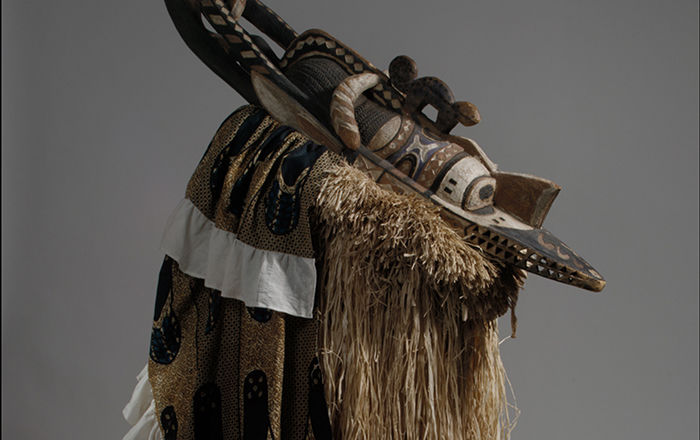
Animal-Inspired Masks and Masquerades
Help students understand the connections between art and the environment of Guinea, animal anatomy, and the cultural context of the Banda mask with the help of viewing questions and a dance activity in the Museum's African Art galleries.
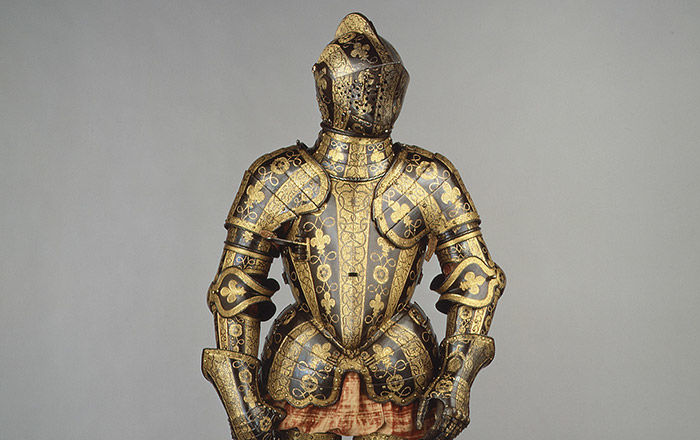
Armor—Function and Design
Identify moveable and static features of armor as well as functional and symbolic surface details and examine similarities and differences between human and animal "armor" through classroom viewing questions. Enhance the lesson with a sketching activity based on an English suit of armor in The Met collection.

The Astor Chinese Garden Court
Explore the Museum's Astor Chinese Garden Court and enhance students' understanding of how traditional Chinese gardens reflect the concept of yin and yang and how material selection and design can convey ideas about the human and natural worlds. Use viewing questions and a storytelling or drawing activity in the Museum's Chinese galleries.
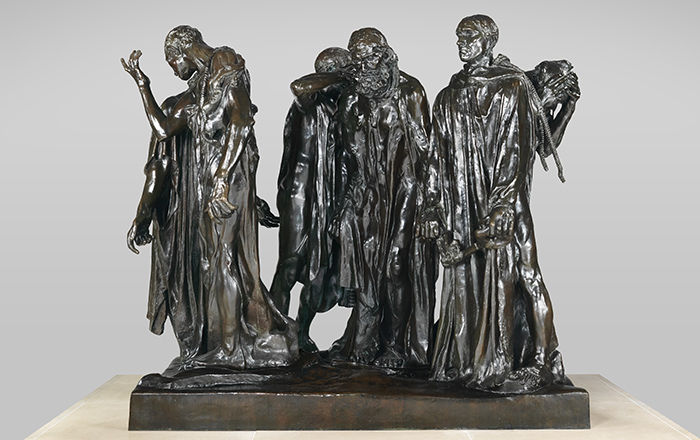
The Burghers of Calais
Convey the interpretive significance of pose and expression in the visual arts—in the Museum or the classroom—with viewing questions and a story-writing activity inspired by a nineteenth-century French sculpture by Auguste Rodin.

Medieval Beasts and Bestiaries
Explore the use of animals as symbols in medieval art with viewing questions and a group drawing activity at The Met Cloisters or in the classroom.
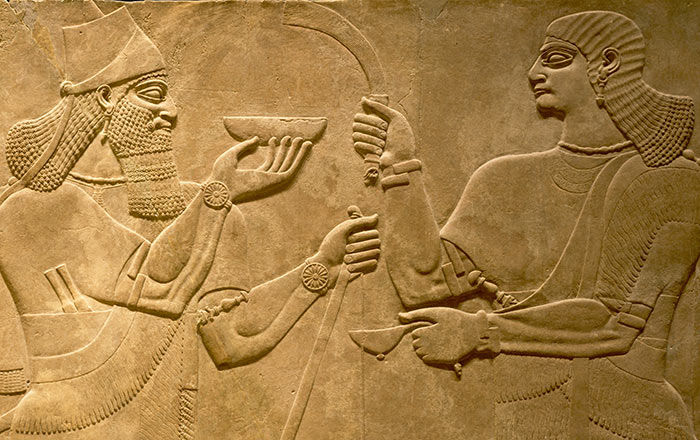
Power in Ancient Mesopotamia
Examine how a great ancient Mesopotamian king conveyed power and leadership in a monumental wall relief in the Museum's Ancient Near Eastern art collection and consider how leaders today express the same attributes through viewing questions and an activity.
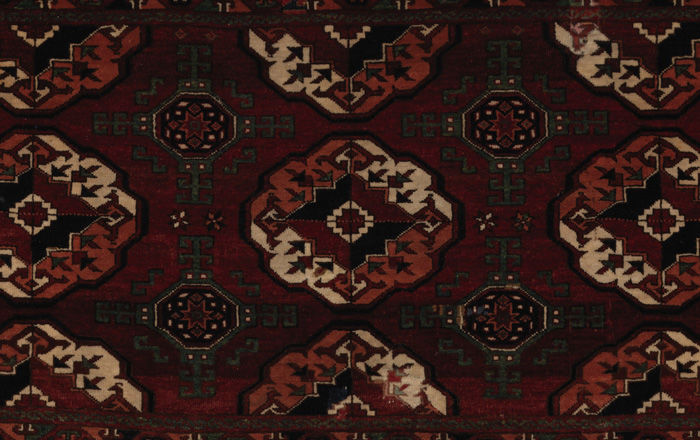
The Nomads of Central Asia—Turkmen Traditions
Students will be able to identify ways art of the Turkmen people of Central Asia reflects nomadic life and understand the functional and symbolic role objects play in their lives.

Voices of the Past
Focus on a slit gong in the Museum's Oceanic collection to illustrate the impact of scale in works of art, and consider objects' functions in their original contexts and ways different communities engage with their elders and ancestors. Classroom viewing questions and an oral history activity enhance the lesson.
Middle School
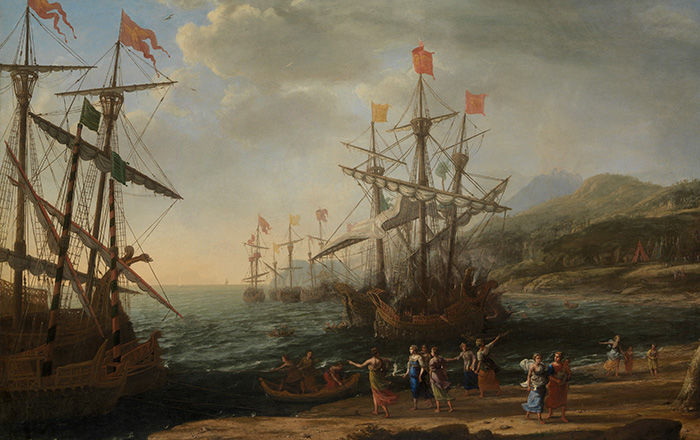

Aeneas, Art, and Storytelling
Virgil's epic poem, The Aeneid , has inspired generations of artists and writers. Create your own artwork inspired by the text and consider how artists draw upon and reinterpret stories from the past.
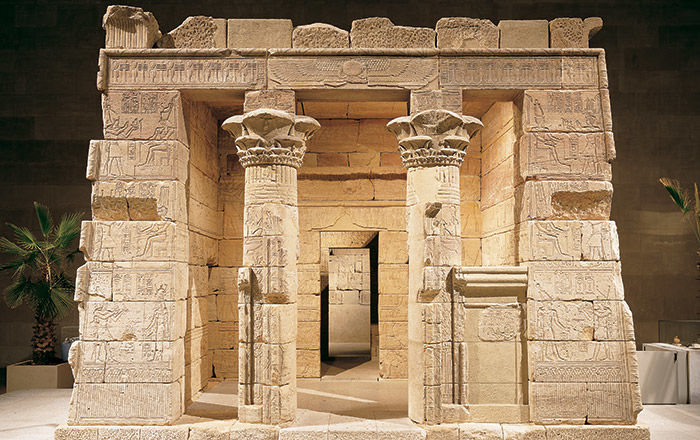
Architecture and the Natural World
How can buildings reflect the relationship between people and the environment? Explore possibilities in this lesson plan featuring an ancient Egyptian temple.

Art and Empire—The Ottoman Court
Students will be able to recognize ways a tughra functioned as a symbol of power and authority within a culturally diverse and geographically expansive empire.
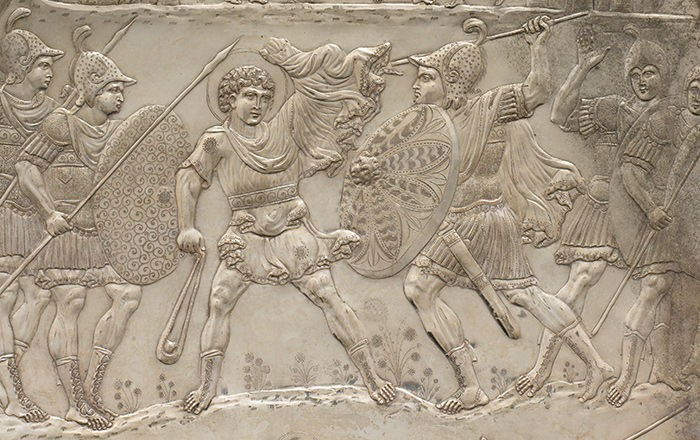
The Battle of David and Goliath
Illuminate strategies for conveying stories through images in the classroom with viewing questions about a large silver plate in the Museum's Medieval collection and an illustrating activity.

Beyond the Figure
Consider how artists convey personality in nonfigural portraits and the relationship between visual and verbal expression by looking at a painting by Charles Demuth in the Museum's Modern and Contemporary galleries and through a portrait-making activity in the classroom.

Bravery Stands Tall
Examine a major turning point in the American Revolution through a close look at this depiction of General Washington and his troops crossing the Delaware River.

Composing a Landscape
Study the relationship between the human and natural worlds in art, as well as the techniques artists use to convey ideas, by exploring a painting by Frederic Edwin Church in the Museum's American Wing. Extend the lesson through a writing and drawing activity in the classroom, or a sketching activity outdoors.
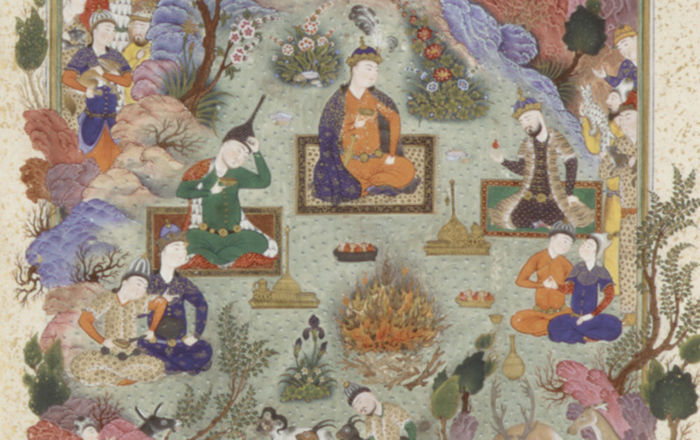
The Making of a Persian Royal Manuscript
Students will be able to identify some of the key events and figures presented in the Persian national epic, the Shahnama (Book of Kings); make connections between the text and the illustrated pages of the manuscript produced for Shah Tahmasp; and create a historical record of their community.
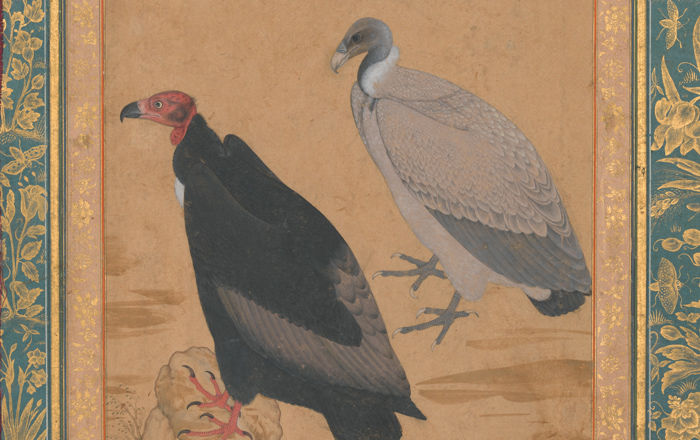
The Mughal Court and the Art of Observation
Students will be able to recognize ways works of art reflect an intense interest in observation of the human and natural world among Mughal leaders; and understand ways works of art from the past and present communicate ideas about the natural world.
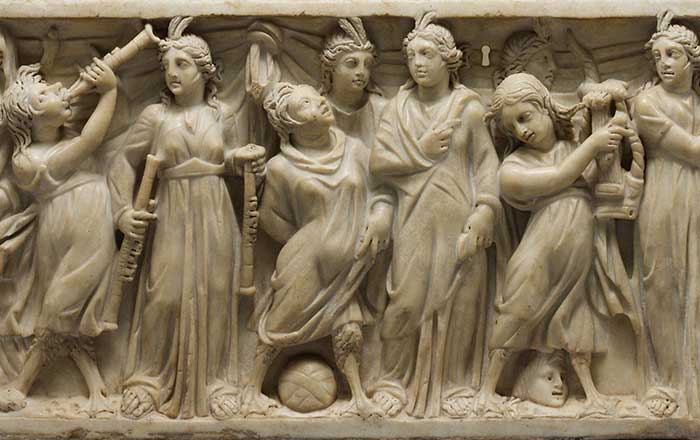
Muses vs. Sirens
Through movement and storytelling, uncover the layers of meaning embedded in a Roman sarcophagus.
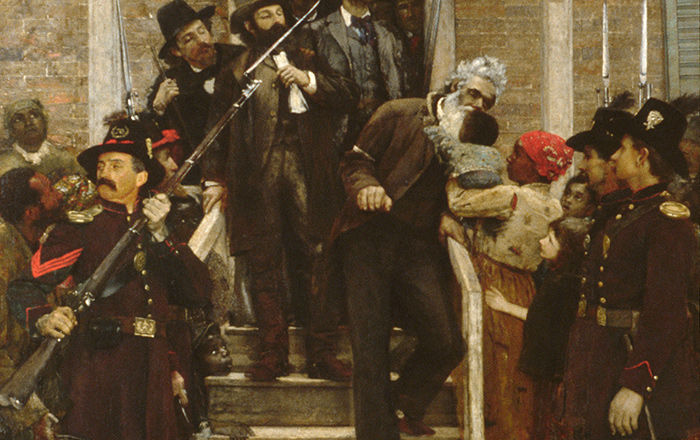
Point of View in Print and Paint
Explore ways that viewpoint shapes the way we picture the past in this lesson plan featuring a depiction of the abolitionist John Brown.
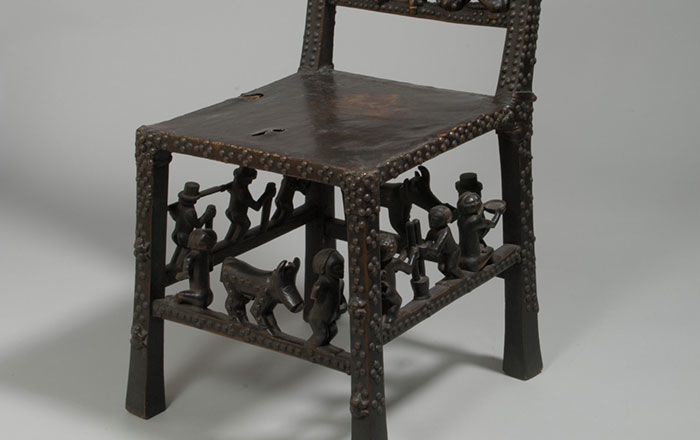
The Power behind the Throne
Bring the Museum's African collection into the classroom with viewing questions and an art-making activity that cultivate visual analysis and an understanding of how surface detail and composition can express themes of power and leadership.
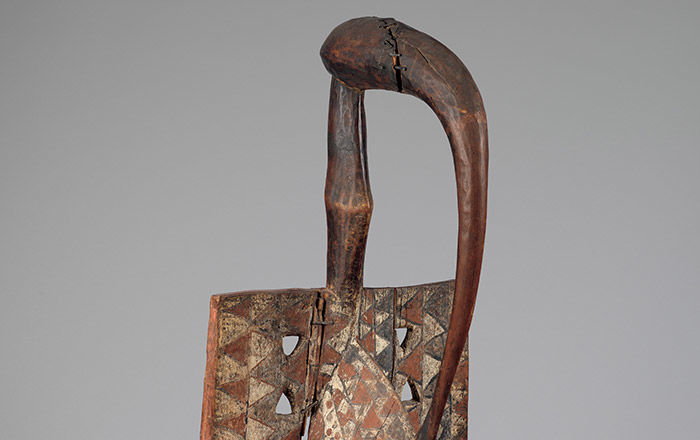
A Rite of Passage
Explore the ways rituals, ceremonies, and rites of passage play an important role in communities around the world through an investigation of related objects.
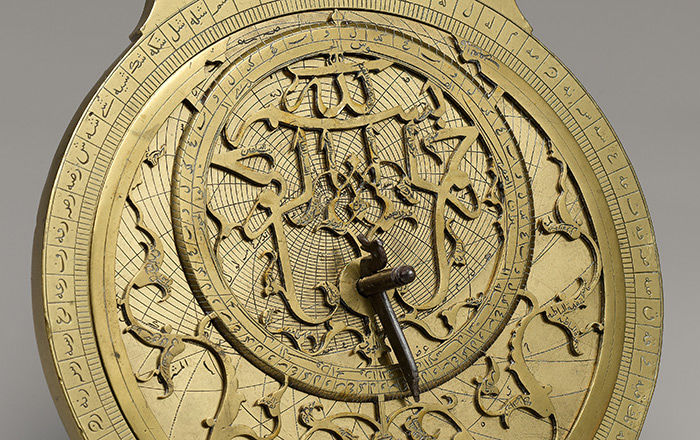
Science and the Art of the Islamic World
Students will be able to identify similarities and differences between scientific tools used now and long ago; and use research findings to support observations and interpretations.
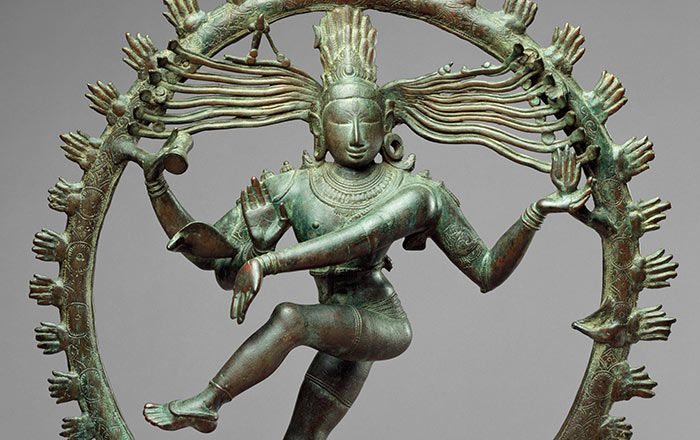
Shiva—Creator, Protector, and Destroyer
Inspire students to interpret, communicate through, and personally connect with art through an in-classroom examination of a powerful sculpture in the Museum's Indian art collection and a self-portrait activity.
High School
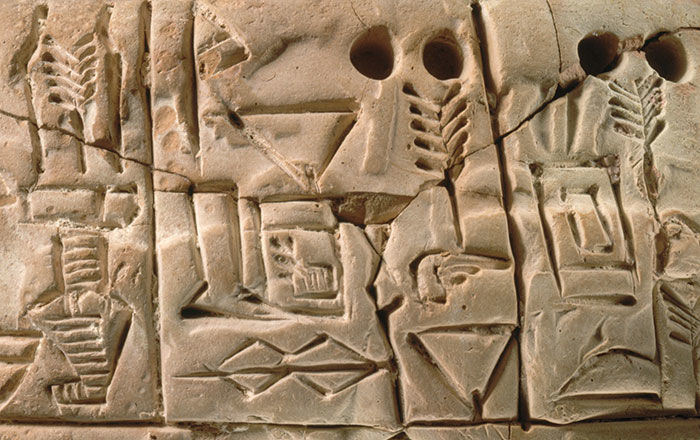
Ancient Mesopotamia—Literacy, Now and Then
From cuneiform inscriptions to digital tablets, this lesson highlights changes and continuity in written communications across the ages.
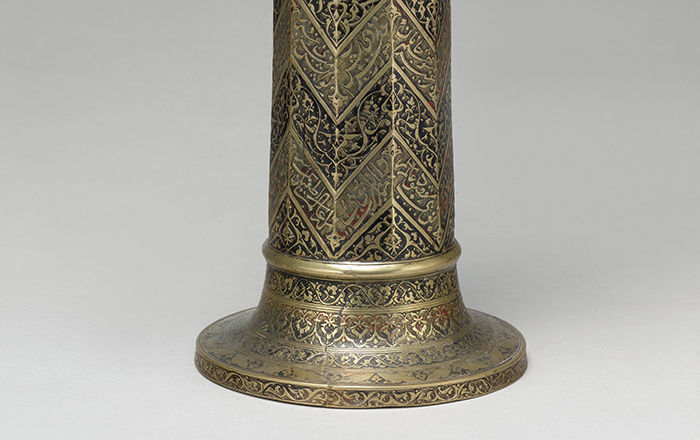
Arabic Script and the Art of Calligraphy
Students will be able to identify visual qualities of several calligraphic scripts; recognize ways artists from the Islamic world engage various scripts to enhance works of art supporting a range of functions; and assess the merits of several computer-generated fonts in supporting specific uses.
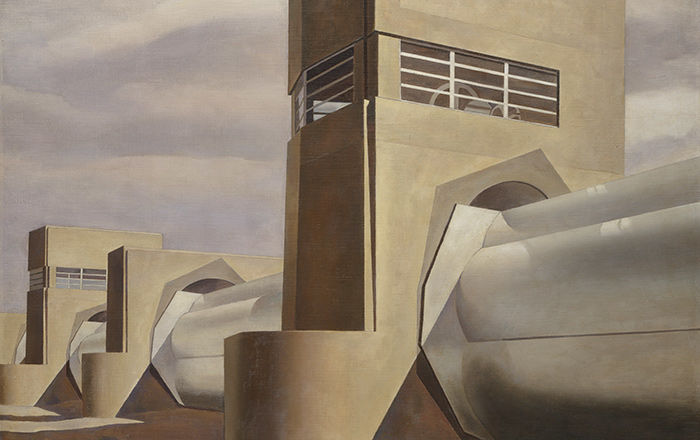
The Art of Industry
Use viewing questions and a debate activity to investigate the relationship between art and community values, techniques artists use to convey ideas, and strategies for interpreting an American painting in the Museum's Modern and Contemporary galleries.
Above: Writing board (detail), ca. 1981–1802 B.C. Middle Kingdom. Dynasty 12. From Egypt; Said to be from Upper Egypt, Thebes or Northern Upper Egypt, Akhmim (Khemmis, Panopolis). Wood, gesso, paint, 16 15/16 x 7 1/2 in. (43 x 19 cm). The Metropolitan Museum of Art, New York, Gift of Edward S. Harkness, 1928 (28.9.4)

- Outreach Performances & Field Trips
- Fundraising
- Field trip lesson plans
- Field Trips Grants
- Service Learning
- Hot Springs
- Little Rock
- Los Angeles
- San Francisco
- Colorado Springs
- Statewide / Region
- Daytona Beach
- Fort Lauderdale
- Gainesville
- Jacksonville
- Orlando-Metro
- Palm Beach Metro
- Space Coast
- Tallahassee
- St. Augustine
- St Petersburg-Clearwater
- Atlanta-Metro
- Chicago-Metro
- Springfield
- Central Region
- Indianapolis
- North Region
- South Region
- Bowling Green
- Baton Rouge
- New Orleans
- Baltimore-Metro
- The Berkshires
- Boston-Metro
- Cape Cod/Plymouth
- Greater Lowell
- Greater Springfield
- Grand Rapids
- Capital-River Region
- Delta Region
- Gulf Coast Region
- Hills Region
- Pines Region
- Jefferson City
- Kansas City
- Springfield-MO
- Delaware River Region
- Gateway Region NJ
- Greater Atlantic City
- Shore Region
- Skylands Region
- Southern Shore Region
- Capital District Region
- Central New York Region
- Finger Lakes Region
- Hudson Valley Region
- Long Island
- Mohawk Valley Region
- New York City
- North Country Region
- Southern Tier Region
- Western New York Region
- Cincinnati Ohio
- Cleveland Ohio
- Columbus Ohio
- Metro Canton Ohio
- Oklahoma City
- Allegheny Mts. & Valleys
- Gettysburg/York
- Harrisburg-Metro
- Lakes & Erie Regions
- Lancaster-Metro
- Lehigh Valley
- Philadelphia Metro
- Pittsburgh & Laurel Highlands
- The Poconos
- Scranton/Wilkes-Barre
- Chattanooga
- East Tennessee
- Middle Tennessee
- The Smokies
- West Tennessee
- Bryan - College Station
- Corpus Christi
- Dallas/Fort Worth
- Panhandle Plains Region
- San Antonio
- Central Virginia
- Chesapeake Bay Region
- Coastal Virginia -Eastern Shore
- Coastal Virginia-Hampton Roads
- Northern Virginia
- Shenandoah Valley
- Southern Virginia
- Southwest Virginia-Blue Ridge Highlands
- Southwest Virginia-Heart of the Appalachia
- Virginia Mountains
- Martinsburg
- Madison Wisconsin
Art Museum Lesson Plan
Please note, this lesson plan was created by FieldTripDirectory.com as a general guide and is not specific to any particular venue listed on our site.
– Vincent Van Gogh created over 2,000 works during his lifetime. However, he was only ever able to sell one of his paintings while he was alive.
– Leonardo Da Vinci was left-handed. He took notes from right-to-left instead of the English language standard left-to-right.
– Pablo Picasso was arrested and questioned regarding the theft of Mona Lisa in 1911. He was released without being charged.
– In late 1961, Henri Matisse’s painting “Le Bateau” was hung upside down at the Museum of Modern Art in New York for 46 days before anyone noticed.
BEFORE YOU GO
An art museum or art gallery is a building or space for the exhibition of art, usually visual art forms, such as ceramics, drawing, painting, sculpture, printmaking, design, crafts, photography, video, filmmaking, and architecture. Paintings are the most commonly displayed art objects in art museums, galleries, and exhibits; however, sculptures, decorative arts, furniture, textiles, costumes, drawings, pastels, watercolors, collages, prints, artist’s books, photographs, and installation art are also regularly shown.
Major art periods:
- Renaissance: 1300-1602
- Romanticism: 1790-1880
- Modern: 1860-1960
- Contemporary: 1960-
Have a general discussion with your students regarding the type of art museums, type of exhibit, and what period of art and artists they will be viewing. Most museums offer educational materials to help prepare your students for the visit. Many are online and you can download teacher and student material to enhance lesson plans before and after your field trip.
Learn about art periods and the culture and history of that period
Learn about artists and their work
Learn about art museums and the staff that work there
Portrait – a picture of a person
Landscape – a picture of the land
Sculpture – a statue
Still-Life – a picture of fruit, vegetable, flowers on a table
Collage – a picture made of many pieces
Abstract – a piece of art that you use your imagination to create
Impressionism – a style of painting that began in France around 1870, that uses spots of color to show the effects of different kinds of light, and that attempts to capture the feeling of a scene rather than specific details
Photograph – a picture taken with a camera
Mural – a very big picture
Ceramics – Vases, pots, and bowls made out of dirt
Sketch – a picture made with a pencil
Watercolor Painting – a picture made with a light-weight water paint
Oil Painting – a picture made with oil paint that is brighter and darker than watercolor paint
Masterpiece – a great book, painting, a piece of music, movie, etc.
Exhibit – an object or a collection of objects that have been put out in a public space for people to look at: something shown in an exhibition
Collection – a group of interesting or beautiful objects brought together in order to show or study them
Gallery – a room or building in which people look at paintings, sculptures, etc.
– Analytic
– Hands-on art activities
– Observation
– Vocabulary development
– Writing
- Create your own classroom museum with changing exhibits of students work.
- Review various art periods. Have students pick their favorite artist from that period and write a report on them.
- Discuss what staff comprises a museum:
– Administrative Staff – Curator – Development Director – Education Director – Executive Director – Finance Director – Guards – Marketing and Communication – Custodial – Publications – Café Operations – Docents
Introduction to Modern Art – Week 8 Assignment
Virtual Gallery Visit
For your final project, you will complete a virtual art museum visit and thoroughly discuss three works. Please pay close attention to the following assignment criteria.
Go to this gallery website for referencing your Final Project.
You should already be familiar with this website from your previous weeks’ work. As you may have remembered, the site is broken down by dates. Cruise the dates and artworks located in those eras of art influence and address the following final project guidelines:
1. Be no less than three pages, but no more than four pages in length.
2. Compare and contrast three artworks in which you will relate specific terminology and facts from your textbook and glossary readings.
3. Discuss the relevance and/or influence of each work to history/art history (via historical context, i.e What was going on in the world at that time that influenced the works and/or vise, versa?).
4. Include a minimum of three resources per work of art from the book and/or internet to support your claims.
5. Include a citation for each source used.
6. Incorporate correct art history vocabulary in your examination.
View your assignment rubric .
Copyright 2021 // Grantham University

IMAGES
VIDEO
COMMENTS
Free Virtual Art Museum Assignment. Whether you’re teaching online, socially distancing in a classroom, or trying to get it all done in a hybrid model, you and your students will love this virtual art museum assignment. Students choose an art museum to visit from the list (all helpfully linked), then there are four activities they can complete:
A sketch is a sketch. Make about 4 or 5 little sketches, taking about a total of 30 min. * Make a digital image of the drawings, and attach the file as you would attach a file to a written assignment. * You may also scan your drawing, and attach that file. PART 3/Museum Project. Write a short research essay on the particular artist that you chose.
Lesson Plans. These lesson plans help you integrate learning about works of art in your classroom. Select an option below to browse lesson plans by grade, or continue scrolling to see all lesson plans. Lesson plans for elementary school students. Lesson plans for middle school students. Lesson plans for high school students.
Find lesson plans for pre-kindergarten, grades 1–2, grades 3–5, grades 6–8, and grades 9–12, as well as college/university classrooms. Also, explore new resources to support your teaching during the pandemic.
Pre-order our book YOU ARE AN ARTIST (which includes new assignments!) here: http://bit.ly/2kplj2h In which we go to The Kemper Museum of Contemporary Art in...
PROJECT DUE PART 1 Find a museum in your area or travel to the museum of your choice. Below is a list of some museums in our area: Canajoharie Library Collection/Canajorharie,NY Munson Williams Proctor Museum/ Utica , NY Fenimore House and Native American Art Museum/ Cooperstown, NY Everson Museum/ Syracuse, NY Clark Museum/Williamstown, Mass.
Major art periods: Renaissance: 1300-1602; Romanticism: 1790-1880; Modern: 1860-1960; Contemporary: 1960-Have a general discussion with your students regarding the type of art museums, type of exhibit, and what period of art and artists they will be viewing. Most museums offer educational materials to help prepare your students for the visit.
Introduction to Modern Art – Week 8 Assignment. Virtual Gallery Visit. For your final project, you will complete a virtual art museum visit and thoroughly discuss three works. Please pay close attention to the following assignment criteria. Go to this gallery website for referencing your Final Project.
Italian Renaissance Art (1400–1600) Southern Baroque: Italy and Spain. Buddhist Art and Architecture in Southeast Asia After 1200. Chinese Art After 1279. Japanese Art After 1392. Art of the Americas After 1300. Art of the South Pacific: Polynesia. African Art. West African Art: Liberia and Sierra Leone.
Learning More About My Culture: Asian Art For this Art Visit Assignment, I visited the Yale University Art Gallery again. There were many different Non-Western sections in the gallery to look at. The most fascinating section is the “Asian Art,” There were artworks of statues, sculptures, dishes, paintings, clothing, etc.